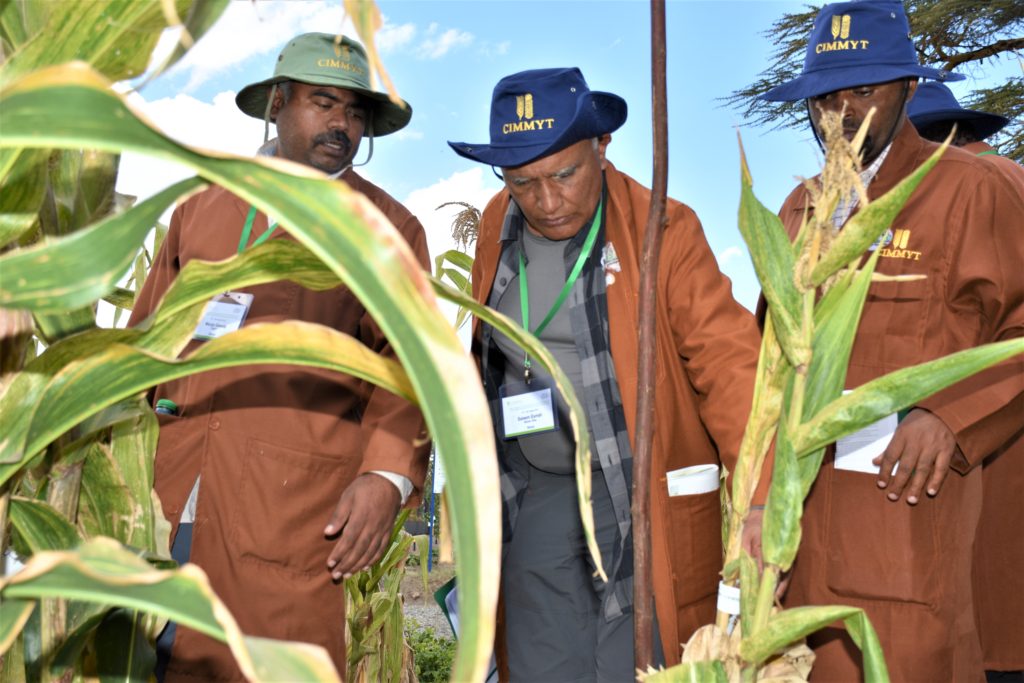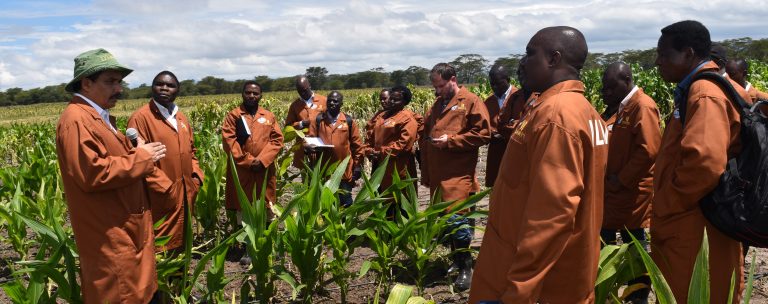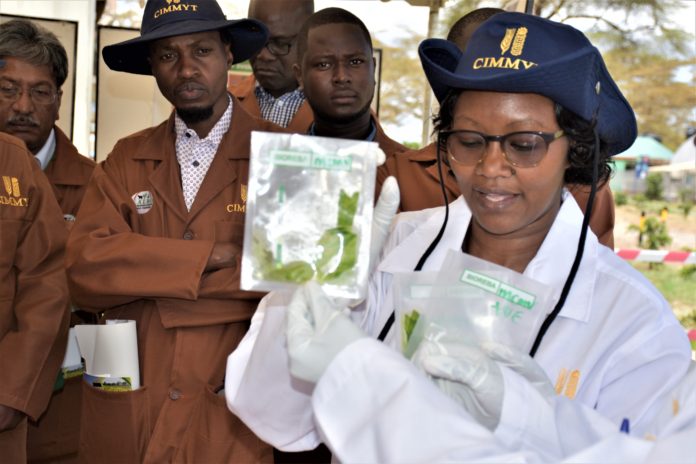By Njeri Kimani
The advent of the immunostrips technology, which helps scientists to test for traces of a lethal virus found in maize called the Maize Lethal Necrosis (MLN), has buttressed efforts to shield farmers from the deadly disease.
MLN is caused by a combination of the maize chlorotic mottle virus (MCMV) and other common cereal viruses such as the sugarcane mosaic virus (SCMV) and was first detected in Bomet County, Kenya in 2011. With the potential to cause up to 100% yield loss, the disease spread quickly across East Africa, devastating food security and incomes of maize farmers in the region.
The immunostrips, which currently retail at Ksh 180, were among the disease detection and surveillance technologies that were showcased at an annual partners field day organized by International Maize and Wheat Improvement Center (CIMMYT) at the end of August 2019. The event brought together maize scientists and seed companies from over 15 countries in Africa and South America.

Scientists acknowledged that early detection of the virus using technologies such as the immunostrips, has helped breeders, seed companies and national plant protection agencies to move quickly to develop seeds that are tolerant to the disease.
“This technology can greatly help our farmers and seed producers to ensure the seeds they produce are MCMV-free, therefore minimizing the transmission of MLN to new plants,” said Dr. Francis Mwatuni, the Project Manager for the MLN Diagnostics and Management Project at CIMMYT.
“While it can also be quite suitable for large scale farmer, currently only seed producers facilitated by seed companies have adopted the use of the strips. This in itself, has a great impact for the project as it helps in having MLN free seed trade across the region,” he added.
According to Dr. Mwatuni, the immunostrip is designed with a specific antibody for the virus, which only binds MCMV antigens from the maize plants hence it is quite specific. The strips are also quite sensitive therefore, suitable for field testing. During the test, the maize plant leaves sap is extracted with a standard extraction buffer. The strip can detect the virus once it gets into contact with the sap.
“A single strip can test six samples from different plants. Two strips can also be used to test for a one-acre piece of land. This is important to ensure a good quality control along seed value chain and build early warning system for different farmers in the region,” Dr. Mwatuni said.
CMMYT has been training key staff within the national plant health organizations, seed companies and research organizations to use the immunostrips for early field detection of MLN. Currently, the immunostrips are sourced from the manufacturers, namely, Bioreba in Switzerland and Agdia in the US.

“With the availability of such technologies to smallholder farmers such as myself, I would feel confident that my maize crop is safeguarded against the disease,” says Nancy Yegon, a farmer in Bomet.
Francis Kemboi, another farmer, hopes the price of the immunostrips would go much lower to enable farmers to buy them, if they were to do the tests on their own. Farmers opting to do this on their own would also need to be properly trained to carry out the tests, and report back to relevant bodies should the MLN-causing virus be detected.
“This is a wonderful technology if large scale farmers like me would access and be trained on how to use it,” says Kelvin Maina. He adds that more of such technologies should be developed to test all the maize diseases and availed to the farmers.
When the disease first broke-out, CIMMYT, in collaboration with national agricultural research institutions, national plant protection agencies and seed sector partners, developed a multidimensional response system including real-time intensive surveillance, screening, and fast-tracking of the MLN resistance breeding program.
Thanks to the MLN Screening Facility in Naivasha, Kenya, maize breeders were able to quickly discover that most popular maize varieties were susceptible, which could expose farmers to the risk of losing their entire maize crops. So far, CIMMYT has released 19 tolerant and resistant hybrids that are equally drought tolerant and high-yielding.
The major challenge, as pointed out by CIMMYT scientists and its partners, has been the slow process and the high costs of certifying and releasing the seeds to the farmers, especially in Kenya.














